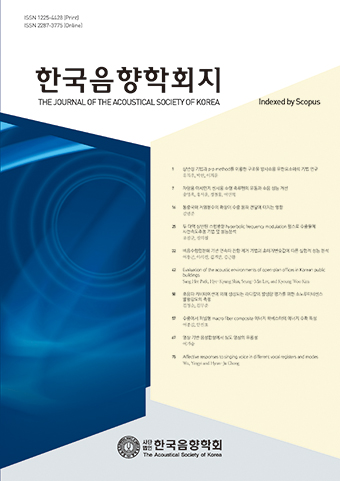Research Article
Abstract
References
Information
- Publisher :The Acoustical Society of Korea
- Publisher(Ko) :한국음향학회
- Journal Title :The Journal of the Acoustical Society of Korea
- Journal Title(Ko) :한국음향학회지
- Volume : 40
- No :4
- Pages :290-296
- Received Date : 2021-05-03
- Accepted Date : 2021-06-23
- DOI :https://doi.org/10.7776/ASK.2021.40.4.290




 The Journal of the Acoustical Society of Korea
The Journal of the Acoustical Society of Korea










